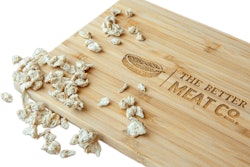
Agriculture is working hard to preserve and protect the water quality of the Mississippi River and Gulf of Mexico through sustainable nutrient and water quality management strategies, farming and environmental experts shared during “What’s Farming Got To Do With Gulf Hypoxia?”
The panel discussion, sponsored by Sanderson Farms, featured:
- Chuck Cariker, Mississippi grain farmer and mayor of Tunica, Mississippi
- Katie Flahive, Environmental Scientist, EPA’s Office of Water, and Coordinating Committee Co-Chair, Mississippi River/Gulf of Mexico Hypoxia Task Force
- Adrienne Marino, Illinois water quality manager, The Nature Conservancy
- Joe Zumwalt, Illinois row-crop farmer
Farming under fire
In recent years, agriculture practices have been named as one of the top contributors to the Gulf of Mexico’s hypoxic zone.
Located in the northern Gulf of Mexico adjacent to the Mississippi River, this hypoxic zone forms every summer because of excess nutrients and seasonal stratification of waters in the Gulf. Fish, shellfish and other local animals often die as a result of hypoxia.
In response, farmers and regulatory bodies in several Mississippi River basin states, including Illinois, Iowa and Missouri, have adopted strategies to minimize nitrogen and phosphorus runoff into the local watershed.
“Our goal is a 45% reduction in total nitrogen and total phosphorus loads that flow into the Gulf of Mexico in order to reduce the hypoxic zone to a five-year running average of less than 5,000 square kilometers. Right now, the size of that zone average is about three times that,” Flahive said.
Farming focus on water quality impacts
A recent research project at Auburn University is focused on identifying what happens to heavy metals in poultry manure used as fertilizer as it moves throughout the watershed. High concentrations of heavy metals can cause water quality impairment.
Poultry litter is a convenient and inexpensive fertilizer source for many farmers. Research has shown that poultry litter is just as effective as synthetic fertilizers when it comes to fertilizing crops.
The researchers ultimately hope the project will help them develop a set of management practices that prevent the heavy metal loss associated with the use of poultry litter as fertilizer.
“The river is a very important thing and it also supplies drinking water,” Cariker said. “Farmers are obviously one of the best stewards of the land in my opinion, it’s how we make our living. We want to make sure that we take care of our land, take care of our water and take care of our resources.”
Like what you just read? Sign up now for free to receive the Poultry Future Newsletter.


















